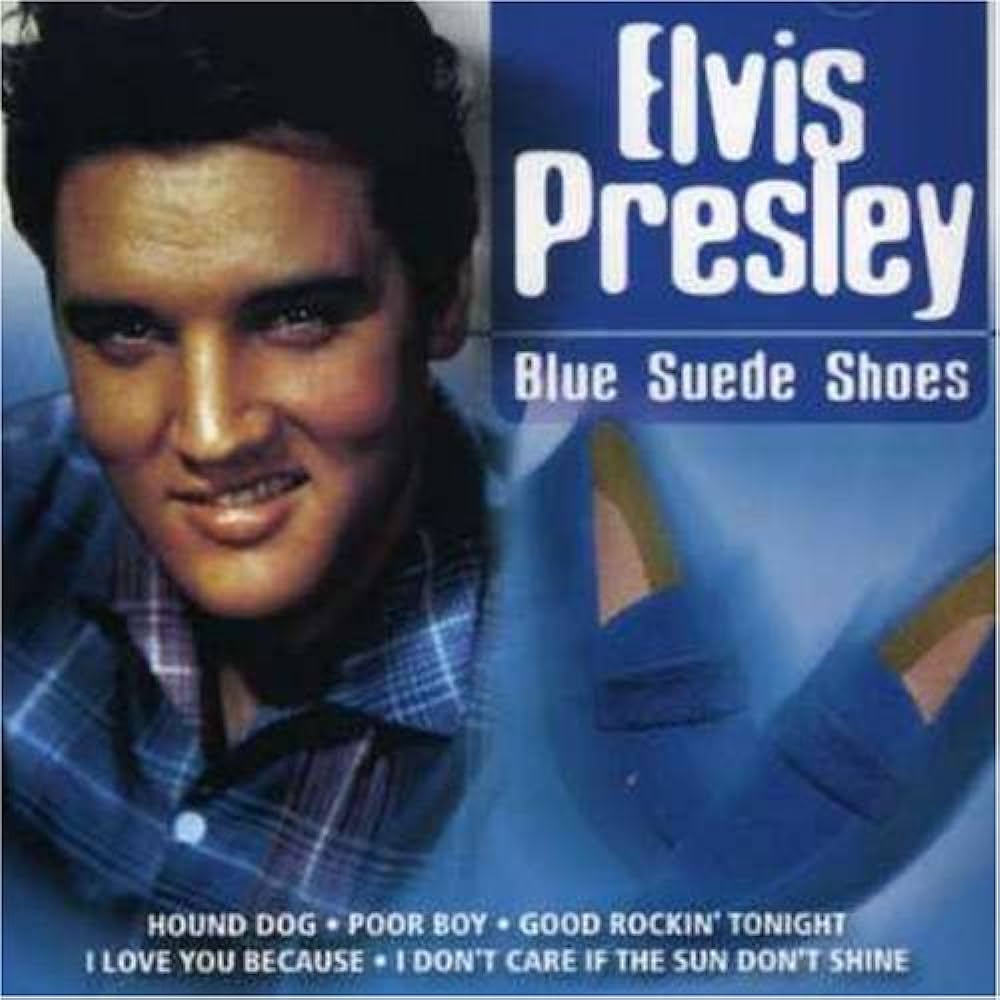Elvis Presley’s rendition of “Blue Suede Shoes” stands as a seminal moment in the history of popular music, marking the intersection of rockabilly, rhythm and blues, and early rock and roll. Released in 1956, this iconic song not only catapulted Elvis to superstardom but also left an indelible mark on the cultural landscape, influencing generations of musicians and reshaping the trajectory of popular music. In this extensive exploration, we delve into the origins, impact, and enduring legacy of “Blue Suede Shoes” by Elvis Presley.
The Genesis of a Classic:
“Blue Suede Shoes” was originally written and recorded by Carl Perkins in 1955, but it was Elvis Presley’s electrifying interpretation that propelled the song to iconic status. Inspired by an encounter with a fan who warned him not to step on her blue suede shoes, Perkins penned the lyrics that would become synonymous with rock and roll rebellion and individuality. Elvis’s recording of “Blue Suede Shoes” captured the youthful exuberance and rebellious spirit of the burgeoning rock and roll movement, resonating with audiences eager for a new sound and a new voice.
The Sound of Revolution:
With its infectious rhythm, driving guitar riff, and raw energy, “Blue Suede Shoes” encapsulated the essence of rockabilly—a fusion of country, rhythm and blues, and rock and roll that defined the sound of the 1950s. Elvis’s dynamic vocal delivery and charismatic stage presence brought the song to life, transforming it into an anthem of youthful rebellion and defiance. From the opening riff to the iconic refrain—”But don’t you step on my blue suede shoes”—the song exuded a sense of urgency and vitality that captured the imagination of listeners and ignited a musical revolution.
Cultural Impact:
“Blue Suede Shoes” struck a chord with audiences around the world, transcending barriers of age, race, and geography to become a cultural phenomenon. Its catchy melody and relatable lyrics resonated with teenagers seeking independence and self-expression, while its infectious rhythm and electrifying performance by Elvis Presley captivated audiences and propelled him to unprecedented fame. The song’s themes of individuality, rebellion, and authenticity mirrored the social and cultural upheaval of the 1950s, making it a rallying cry for a generation eager to break free from the constraints of the past.
Enduring Legacy:
More than six decades after its release, “Blue Suede Shoes” remains a timeless classic and a cornerstone of the rock and roll canon. Its influence can be heard in countless recordings across genres, from rock and pop to country and blues, attesting to its enduring appeal and cultural significance. The song has been covered, sampled, and referenced by artists ranging from The Beatles to Bruce Springsteen, cementing its status as a musical touchstone and a symbol of rock and roll rebellion.
Conclusion:
“Blue Suede Shoes” by Elvis Presley stands as a testament to the power of music to transcend boundaries, unite generations, and shape cultural identity. From its humble origins as a country-blues crossover to its transformation into a rock and roll anthem, the song embodies the spirit of innovation, creativity, and defiance that defines the genre. With its infectious rhythm, dynamic performance, and timeless message of individuality, “Blue Suede Shoes” continues to resonate with audiences worldwide, reminding us of the enduring legacy of rock and roll and the transformative power of music.
